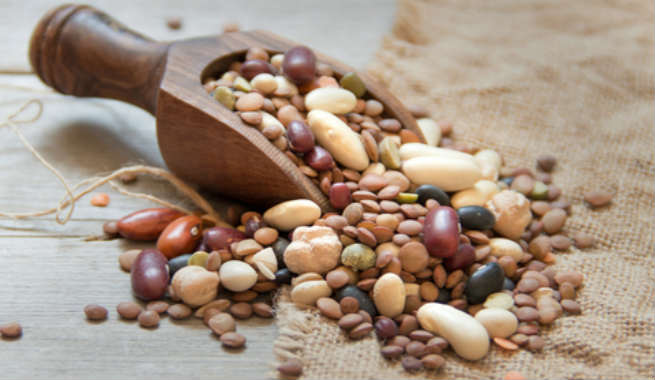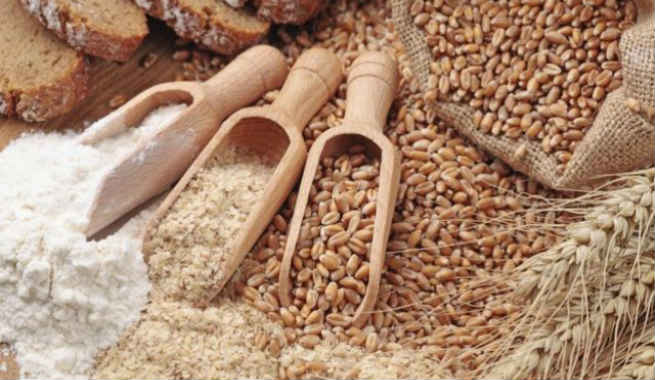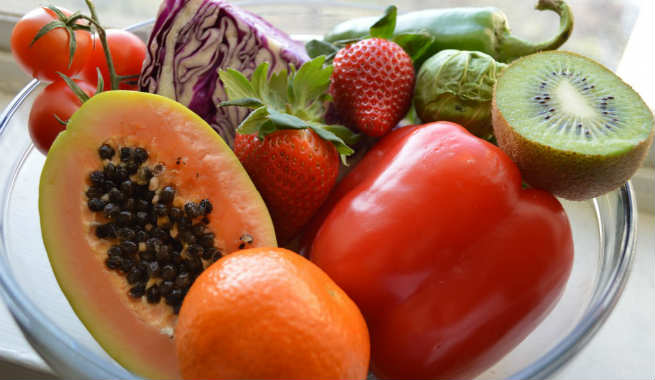The term ‘anti-nutrient’ might immediately come to mind when discussing phytic acid, drawing scientists’ concern for potential mineral deficiencies. While it has earned a bad reputation for this reason, phytic acid also holds health benefits. This post aims to shed light on these phytochemical and list-rich foods. (1) (2)
About Phytic Acid
Phytic acid or phytate, also known as IP-6 or Inositol hexaphosphate, is the mineral phosphorus’s ‘storage form.’ It is mainly found in plant seeds, including beans, legumes, nuts, whole grains, etc., while tubers, roots, and other veggies may contain small amounts. Phytic acid is associated with the sprouting of seeds and works as a potent energy source throughout the process. During sprouting, the enzyme phytase works directly on the phytic acid to degrade it and release phosphorous, which is essential for the germination as well as the growth of seeds.
Also Read – 5 Sprouts And Their Health Benefits For Weight Loss
Foods High In Phytic Acid
Before digging deeper into how phytic acid can benefit our health, let’s look at some foods significantly high in this phytochemical. Not all of them contain phytic acid in equal amounts. Instead, the acid content varies massively from one item to another. So, here is the list of plant-derived foods that are rich in phytic acid:
Seeds
Different types of seeds certainly top the chart regarding the wealthiest sources of phytic acid. According to the evidence of several studies, as much as 7% of the dry weight of all sorts of seeds is attributable to phytic acid, which is undoubtedly the highest concentration. For example, a 100-gram serving of sesame seeds holds almost 5.4 grams of phytic acid. Other varieties, such as flax seeds, sunflower seeds, rape seeds, linseeds, etc., also have the component in more or less the exact amounts. One should soak dry-roasted seeds for maximum nutritional benefits before consumption.
Nuts
Nuts are placed in the second position in the list of top phytic acid-rich natural food items. There is a wide range of nuts, and this acid can form up to 3% of their dry weight. As per sources, a serving of 100 grams of almonds contains approximately 9.4 grams of phytic acid. The amount becomes 6.7 grams and 5 grams for walnuts and cashews, respectively. Ensure you soak and toast your favorite nuts before snacking them on.
Beans
A wide variety of beans (black beans, kidney beans, pinto beans, soybeans, navy beans, cowpeas, broad beans, and so forth) are available in the market, and their phytic acid content lies anywhere between 2% and 3% of their dry weight. A 100-gram serving of cowpeas contains around 3 grams of the phytochemical, while the same serving of broad beans offers 1.7 grams of it. On the other hand, 100 grams of black, pinto, and kidney beans can provide nearly 2.4 grams of phytic acid. To make the most of these beans, you must soak them in warm water overnight and cook the following day.
Whole Grains
The outer bran layers of grains are enriched with phytic acid. Hence, when choosing grains to embrace phytic acid, you should opt for whole grains instead of refined ones. These include wheat bran, brown rice, wild rice, whole wheat, oats, barley, corn, rye, etc. It has been seen that a serving of 100 grams of wheat bran has 7.3 grams of phytic acid to offer. The amounts of rice barn, wild rice, and oats will become 2.6 grams, 2.3 grams, and 0.4 grams, respectively. Pre-soaking whole grains before intake will help you take maximum nutrition out of them.
Potatoes
Potatoes are also exceptionally rich in phytic acid. The best thing about phytate in potatoes is that it remains intact even after cooking, baking, roasting, or frying.
Apart from these, other common fruits and vegetables also contain phytic acid or phytate in small amounts.
Health Benefits Of Phytic Acid
Now, here are the benefits that phytic acid offers to our body:
- It helps in preventing cell damage, thereby protecting against breast, prostate, and colon cancer.
- Puts a stop to the formation of kidney stones.
- It improves our cardiovascular health by averting the hardening of artery walls.
- It keeps us fuller for a more extended period.
- Fights against a specific genetic disorder called hemochromatosis, in which the patient suffers from iron overload in their body.
- Offers protection from free radical damage with the help of antioxidant properties.
Hence, make sure that you consume phytic acid-rich foods in moderate amounts, but do not cut them off your diet chart completely.
Also read: Why is eating sprouts for hair awesome? Benefits, Uses, and Potential Risks
Summary
Phytic acid, or IP-6, is a naturally occurring compound in plant seeds, especially in nuts, beans, and whole grains. While it has gained a reputation as an anti-nutrient, it plays a crucial role in energy storage during seed sprouting. Foods high in phytic acid include seeds, nuts, beans, whole grains, and potatoes. Despite concerns about mineral absorption, phytic acid offers health benefits, such as preventing cell damage, reducing cancer risk, improving cardiovascular health, and acting as an antioxidant. Consumption in moderation is recommended.



